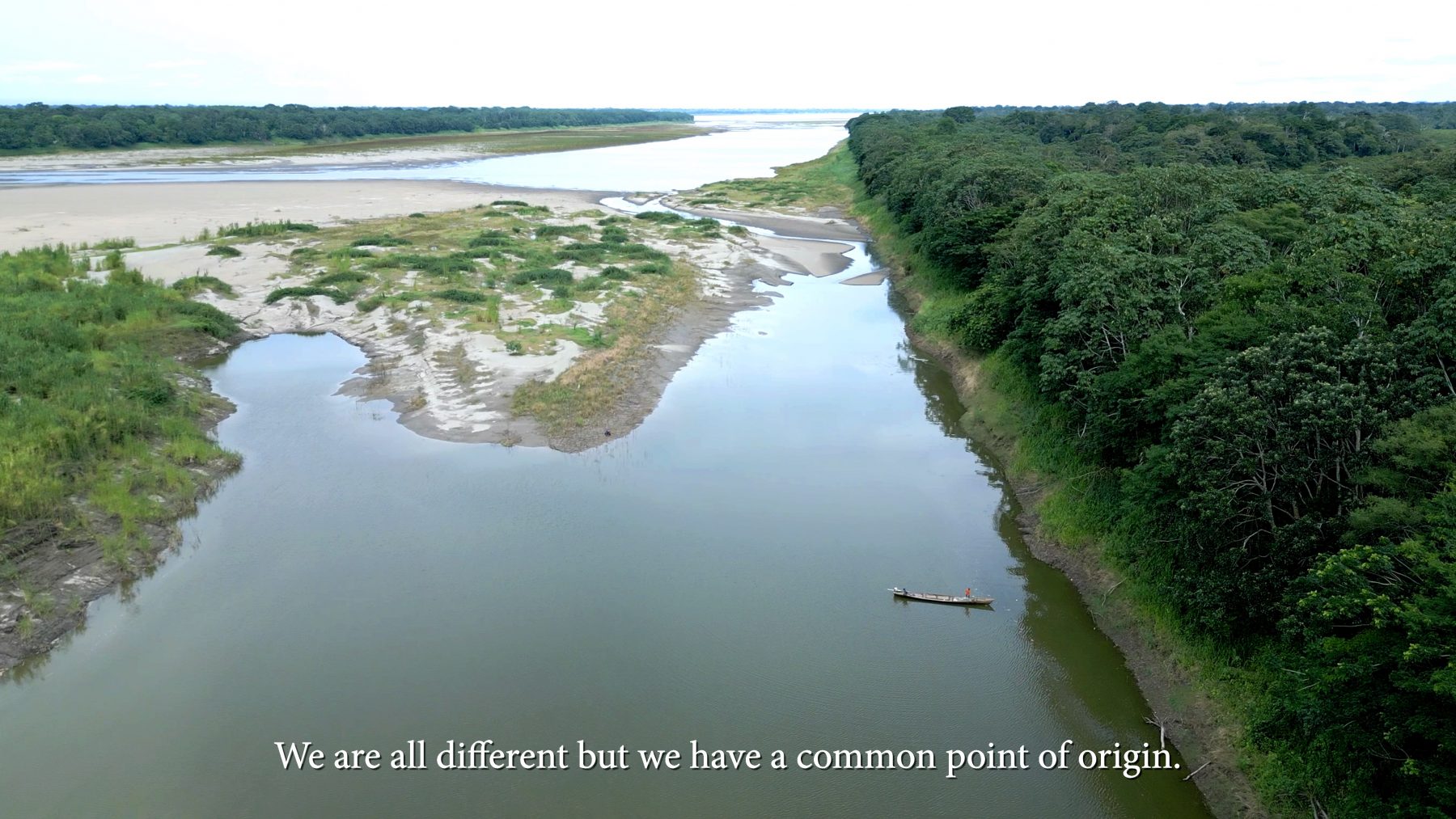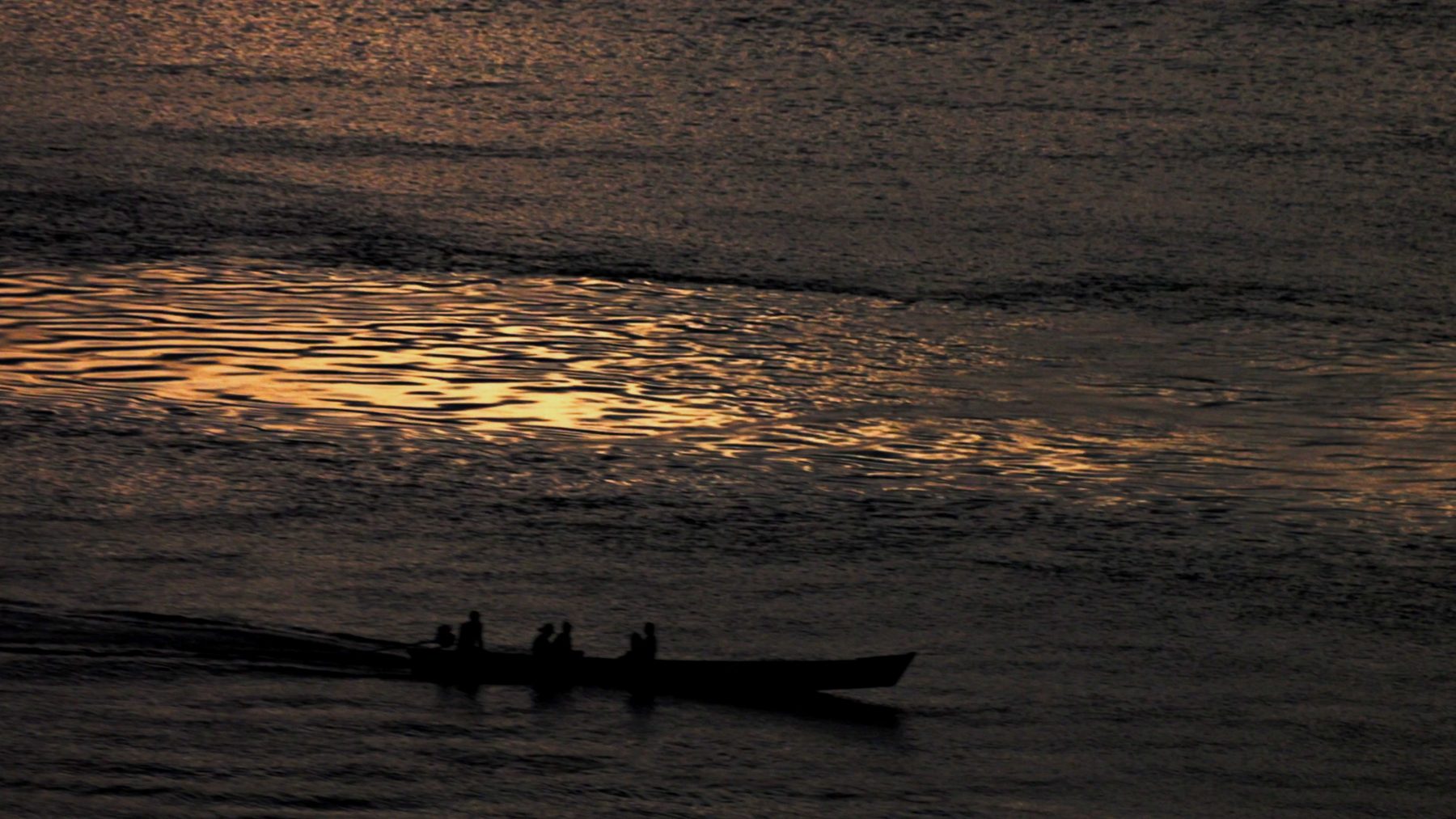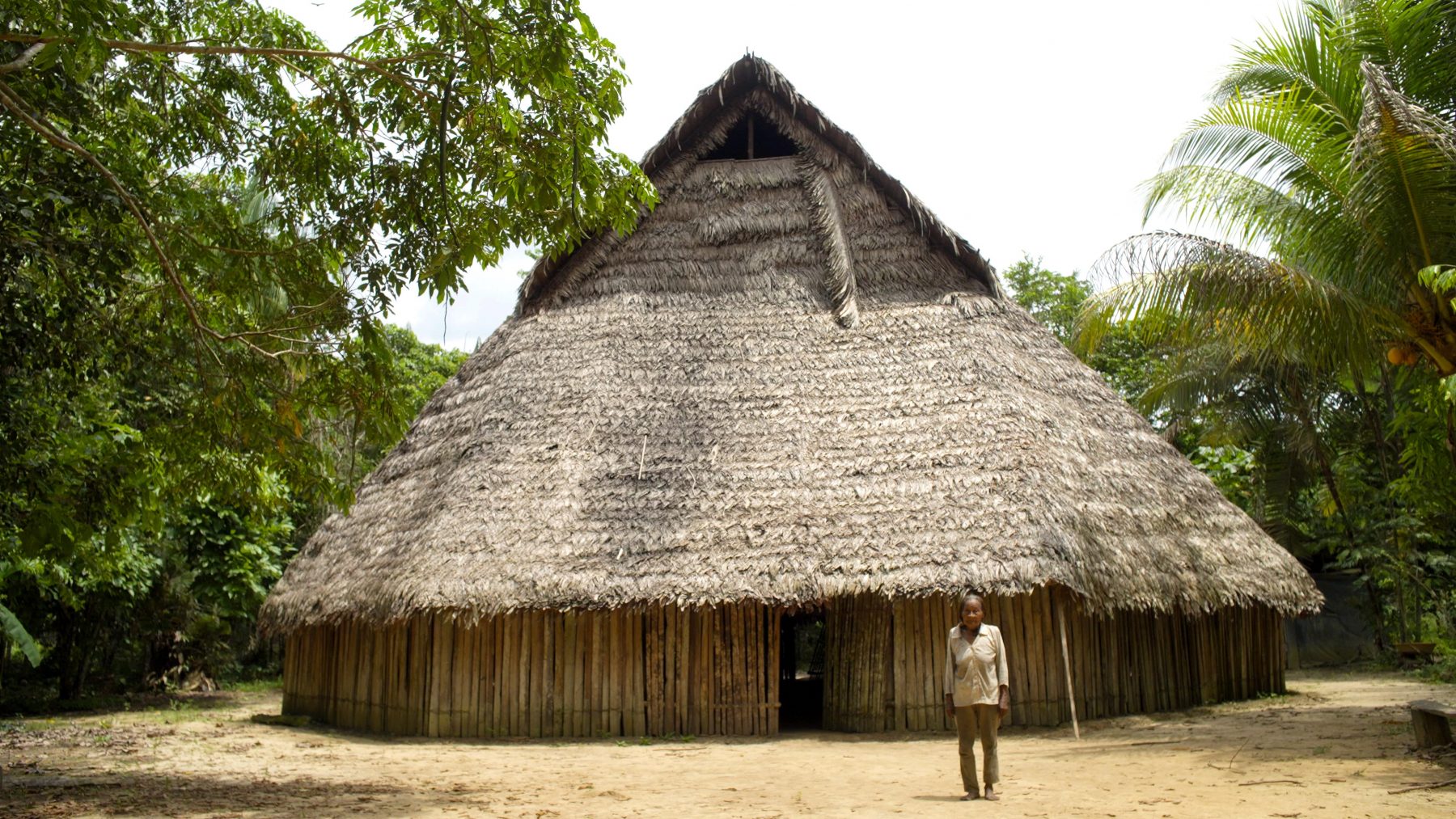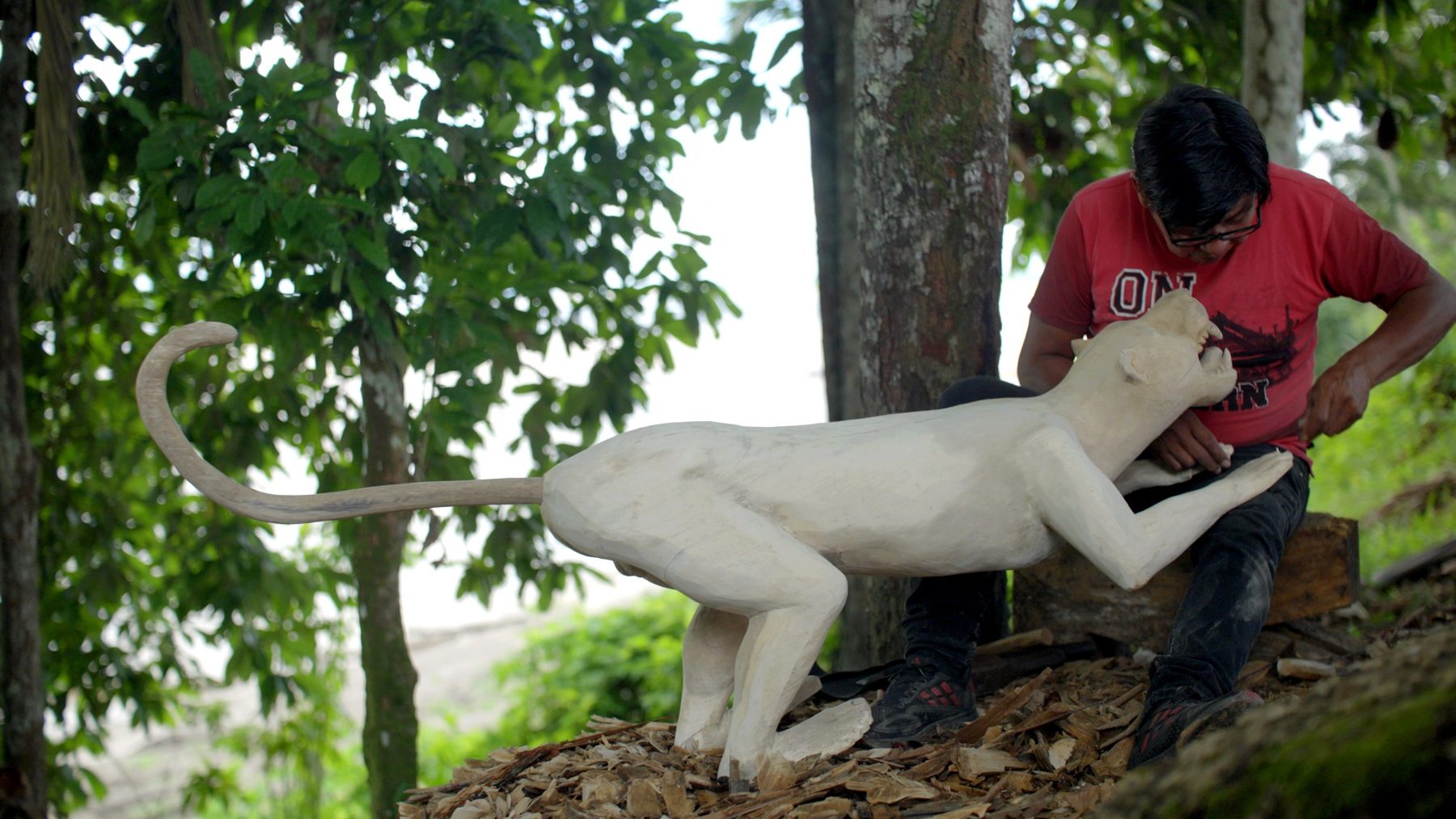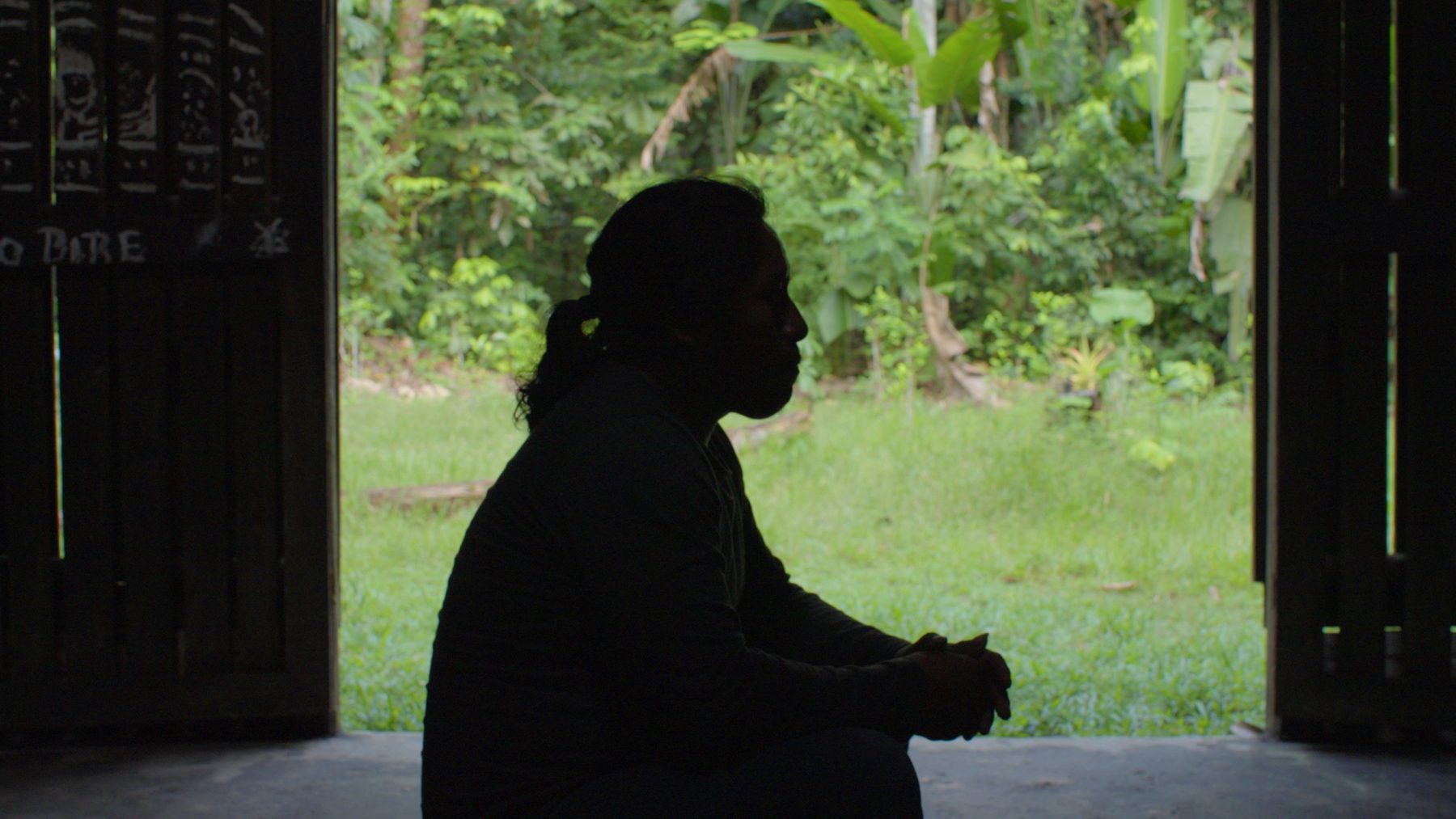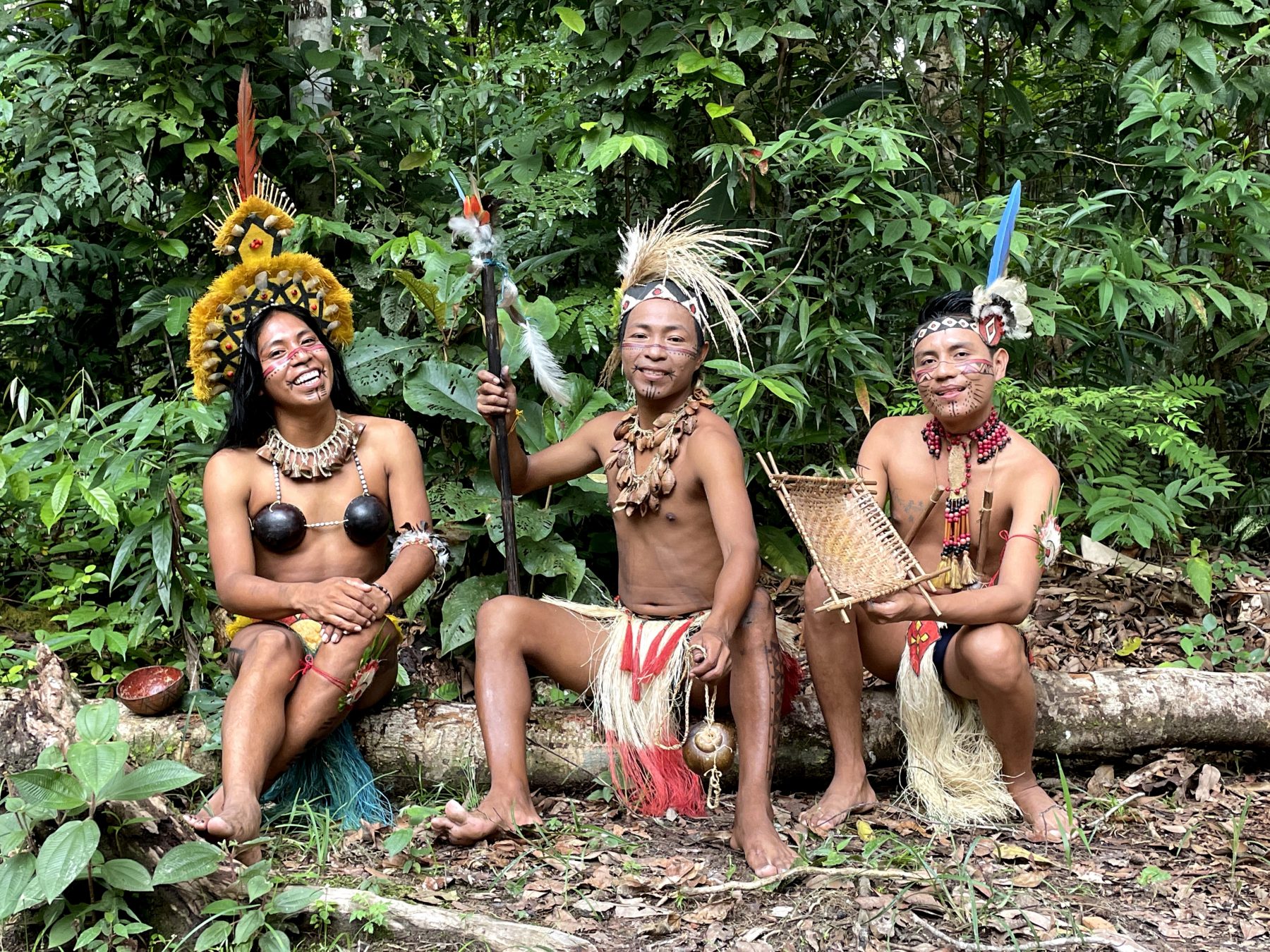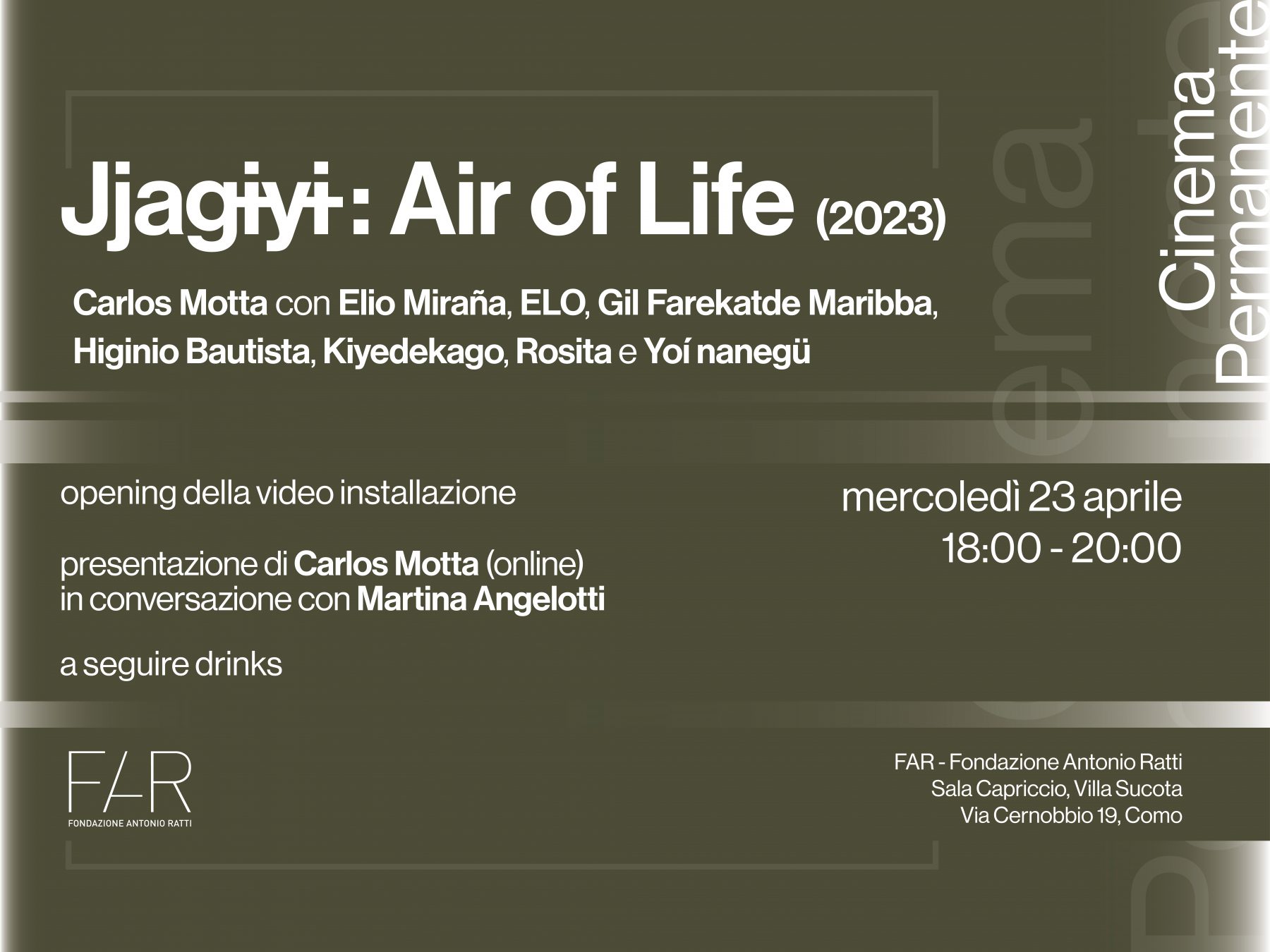Carlos Motta con Elio Miraña, ELO, Gil Farekatde Maribba, Higinio Bautista, Kiyedekago, Rosita e Yoí nanegü
Cinema Permanente #4 || Jjagɨyɨ: Air of Life
EVENT
23 April 2025
FAR - Capriccio
For the fourth encounter of Cinema Permanente, the colombian artist Carlos Motta will present the video installation Jjagɨyɨ: Air of Life, realized with Elio Miraña, ELO, Gil Farekatde Maribba, Higinio Bautista, Kiyedekago, Rosita and Yoí nanegü and which builds on Motta’s two-decade history of collaborative multi-media installations that examine identities and lived-experiences of marginalized groups, and the intersectional repercussions of colonialism. Through a sustained engagement with cultural practitioners from Indigenous groups in the Colombian Amazon like the Maguta, Miraña, Muinane, and Murui, Motta and his collaborators confront the colonialist history of boarding schools established in the region by the Capuchin Missions and their lasting impact on the disuse of Indigenous languages, the truncated transmission of cultural knowledges, and the establishment of Christianity as an institutionalized religion. Through songs, storytelling and artisanship, indigenous ancestral cosmogony are evoked, resisting to Western epistemicides to enlarge their horizon to all the living and non-living beings in a radical practice of care.
The opening will be integrated by a presentation of the work by Carlos Motta (remotely) and a conversation between the artist and Martina Angelotti.
WATCH ON VIMEO
Drinks will follow.
The installation will be on display for two weeks.
Jjagɨyɨ: Air of Life (2023) Carlos Motta with Elio Miraña, ELO, Gil Farekatde Maribba, Higinio Bautista, Kiyedekago, Rosita and Yoí nanegü(Colombia)
The concept of jjagɨyɨ, in the Murui language, is an origin story that is also shared by a cultural complex of eight ethnic groups known as ‘the people of the center of the world,’ and interpreted as the ‘children of a Creator.’ Jjagɨyɨ: Air of Life thus invokes resuscitating or breathing life back into ancestral cultural practices in the present. In the 3-channel video installation, simultaneously playing on a projector and two monitors, the collaborators recount their experiences after the arrival of the Catalan monks of the Capuchin Order, a push-and-pull struggle that continues to affect them. The histories of Indigeneity coalesce through the voices depicting the infliction of violence, both verbal and physical. Through their storytelling, artisanship, dance, and song, the speakers participate in the protection and survival of their language and practices. The video features Elio Miraña, Gil Farekatde Maribba, Higinio Bautista, Kiyedekago, Rosita, and Yoí nanegü who speak of how their upbringing reflected traditionality, yet upon their entry into the boarding schools and other modern colonial institutions, they were forced to assimilate into Catholicism, speak Spanish, and adopt Western social norms and expectations. The sporadic Indigenous words that they speak in their sentences are a gesture to both what no longer exists and what could potentially be rescued. As is warned by Elio Miraña, "a lot can be lost, but once we lose our language, we lose everything".
The installation offers both a visual and sonic experience. Interspersed throughout, shots of the Amazonian landscape are a reminder of the magnitude of the forest and the indigenous histories housed within its lush and green terrain. They also allude to the use of trees in the creation of sculptures like those by Higinio Bautista and the spirits that reside in them, having to be blessed by a shaman before being cut down. Accompanying the visual imagery of the videos, the vastness of the Amazon, and its constant noises made by insects, animals, and plant life are replicated in the soundtrack composed by ELO and soundscapes by field sound recorder and designer Isabel Torres, which aid in the atmospheric transformation of the space. These layered components of the work in the first room highlight the viewer’s status as a guest, posing the question of how they may engage with the space.
Credits
Original Soundtrack
ELO
Director of Photography
Lola Gómez Castello
Sound Design
Isabel Torres Reyes
Sculptures
Higinio Bautista
Carlos Motta
Exhibition and Model Design
Jeremy Schipper (Video Design and Animation)
Lauryn Siegel
Video Colorist
Angela Herr
Mogüta/Ticuna song performed by Yoí nanenü
Oí Churume, Cantor
Translated by Fabiola Fonseca and Ismenia Pinto
Translations from Miraña
Elio Miraña
Pre-Production and Research
Gustavo Lorgia (Field Producer)
Ryan Cortes (Camera Assistant)
Luis Hernando Cubillos
Foley Artist
Daniel Giraldo (Production Director)
Paola Andrea Pérez Nieto (Inercia Películas)
Production Coordinator
Catalina Patarroyo
Natalia Ordoñez García
Oficina Inercia Películas
Camilo Cárdenas Suárez
Alejandra Gómez Osorio
Sara Loboa
Elizabeth Hernández
Catalia Patarroyo
Equipment
Cinemarket, Bogotá
Transportation
Jose Barreto
Arley Mateo Ordoñez
Location
Shot in and around Leticia, Amazonas, Colombia in 2022
